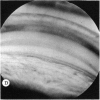Abstract
The hypothesis proposed by Campbell goes a long way to clarify the loss of pigment from the posterior iris pigment epithelium in PDS. However, the present series of cases of either asymmetric PDS (cases 1 to 3) or early developing PDS (cases 5 to 7) suggest that other factors appear to play a role in addition to mechanical rubbing. These other factors await further identification.
Full text
PDF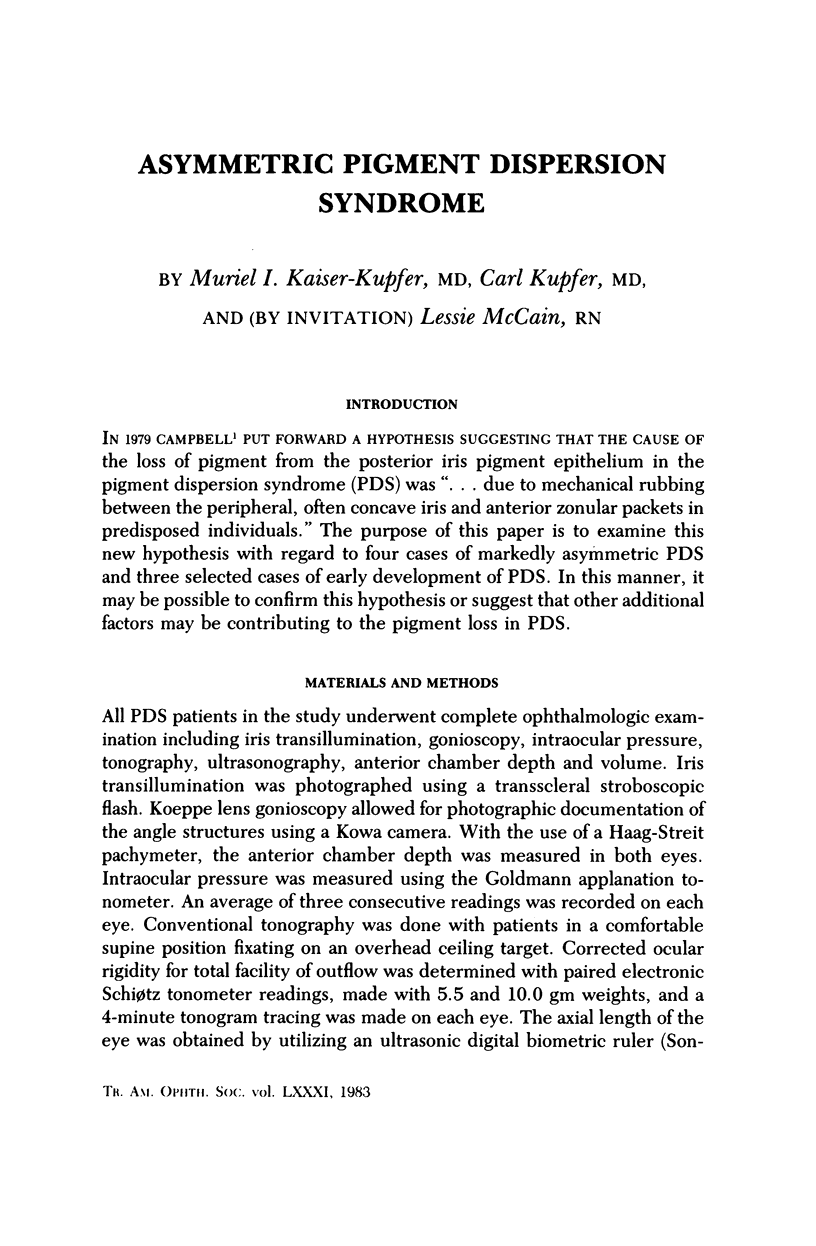
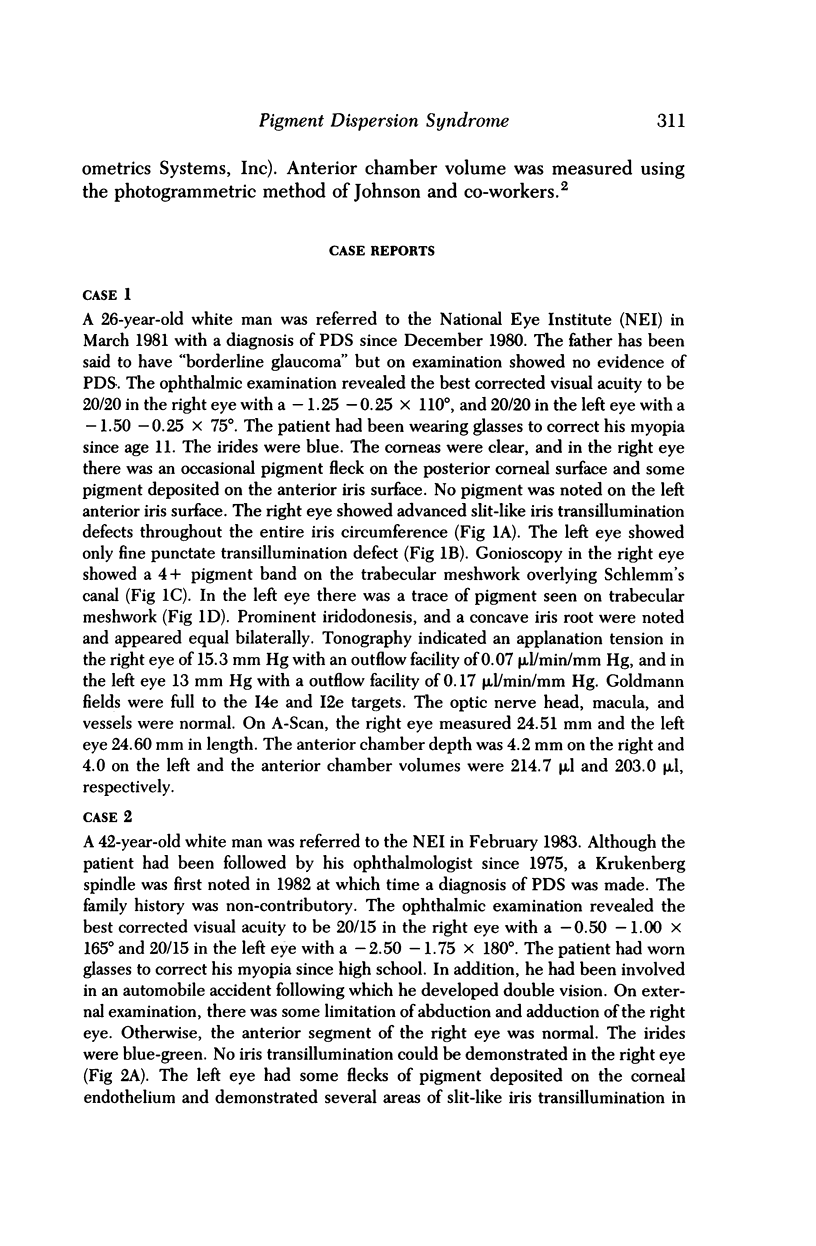
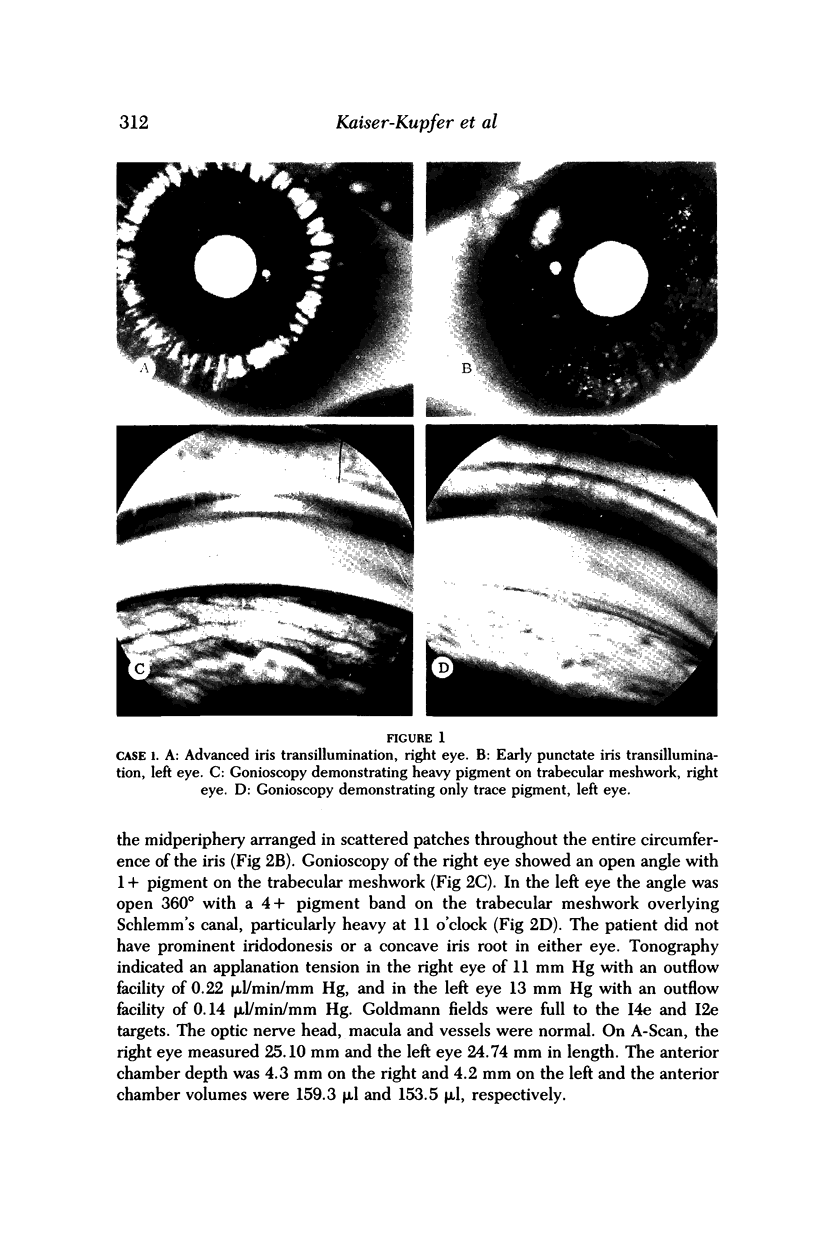
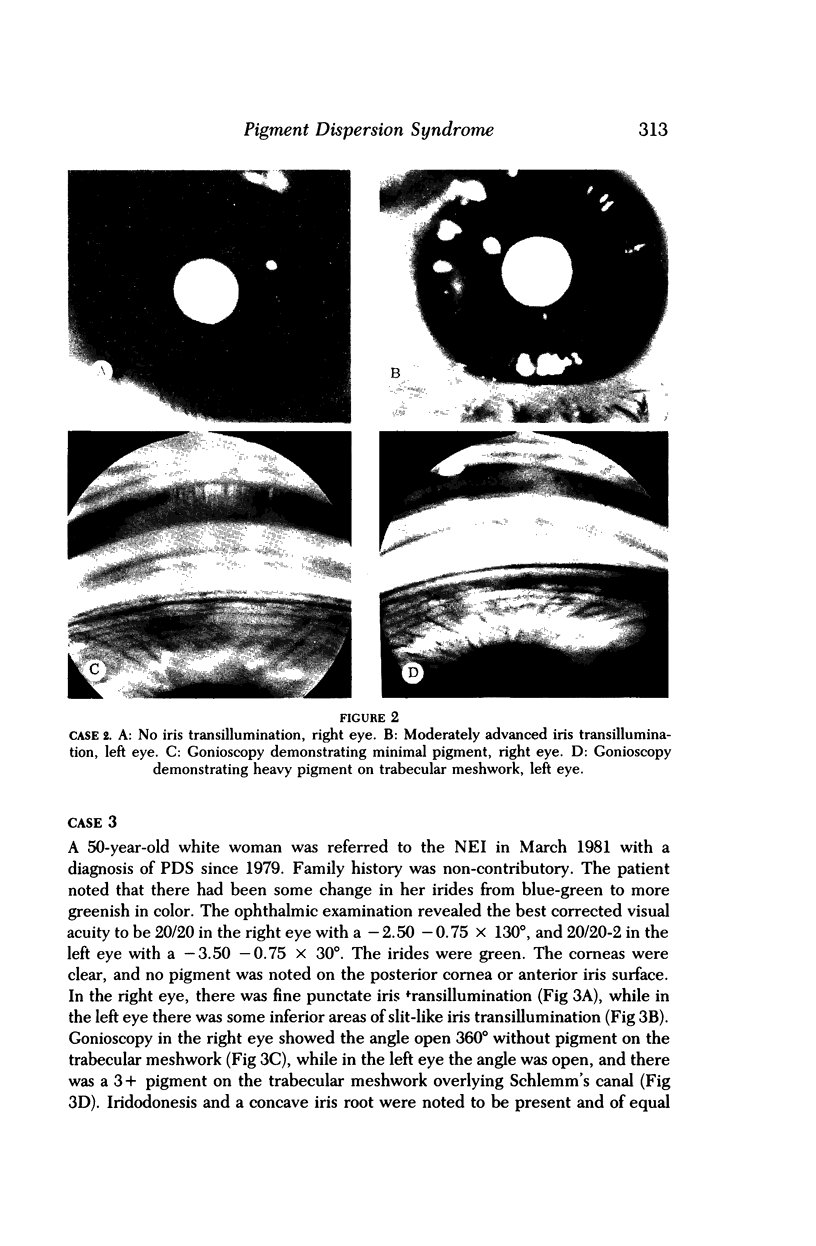
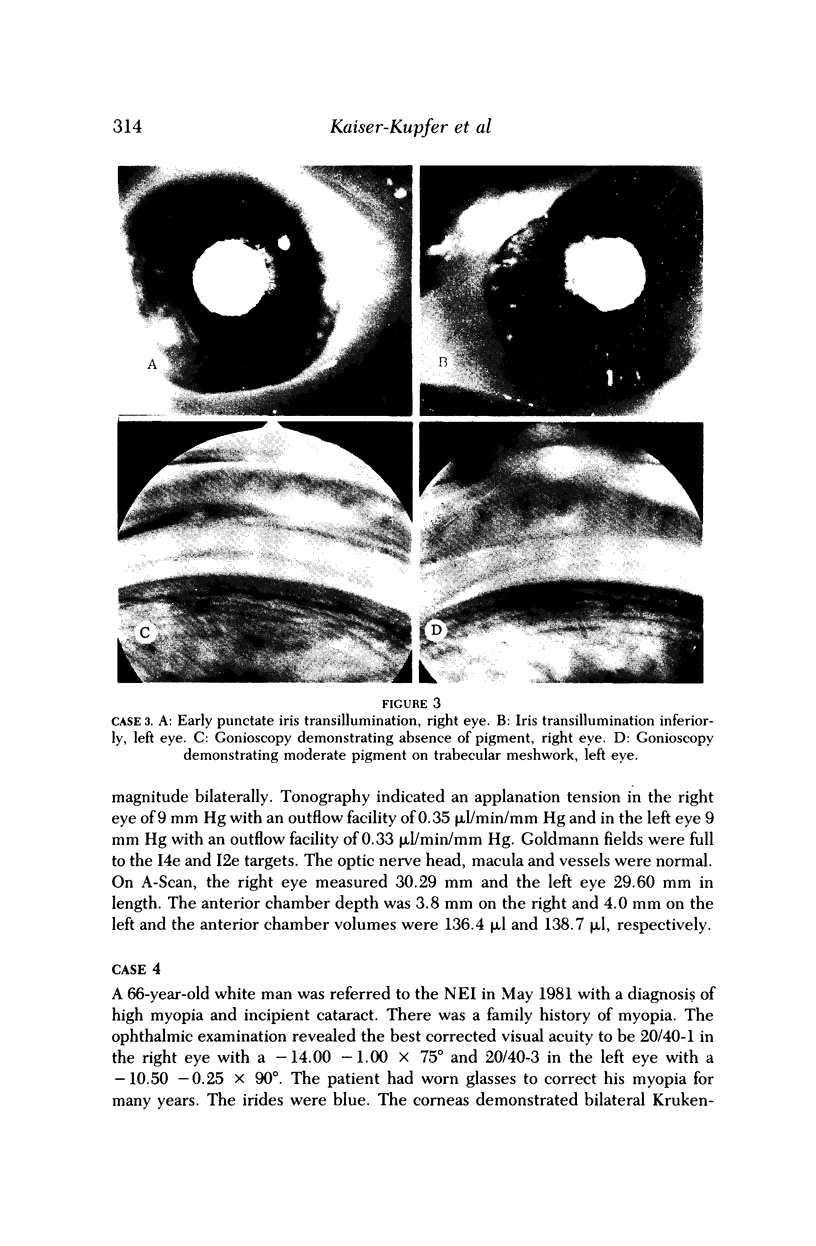
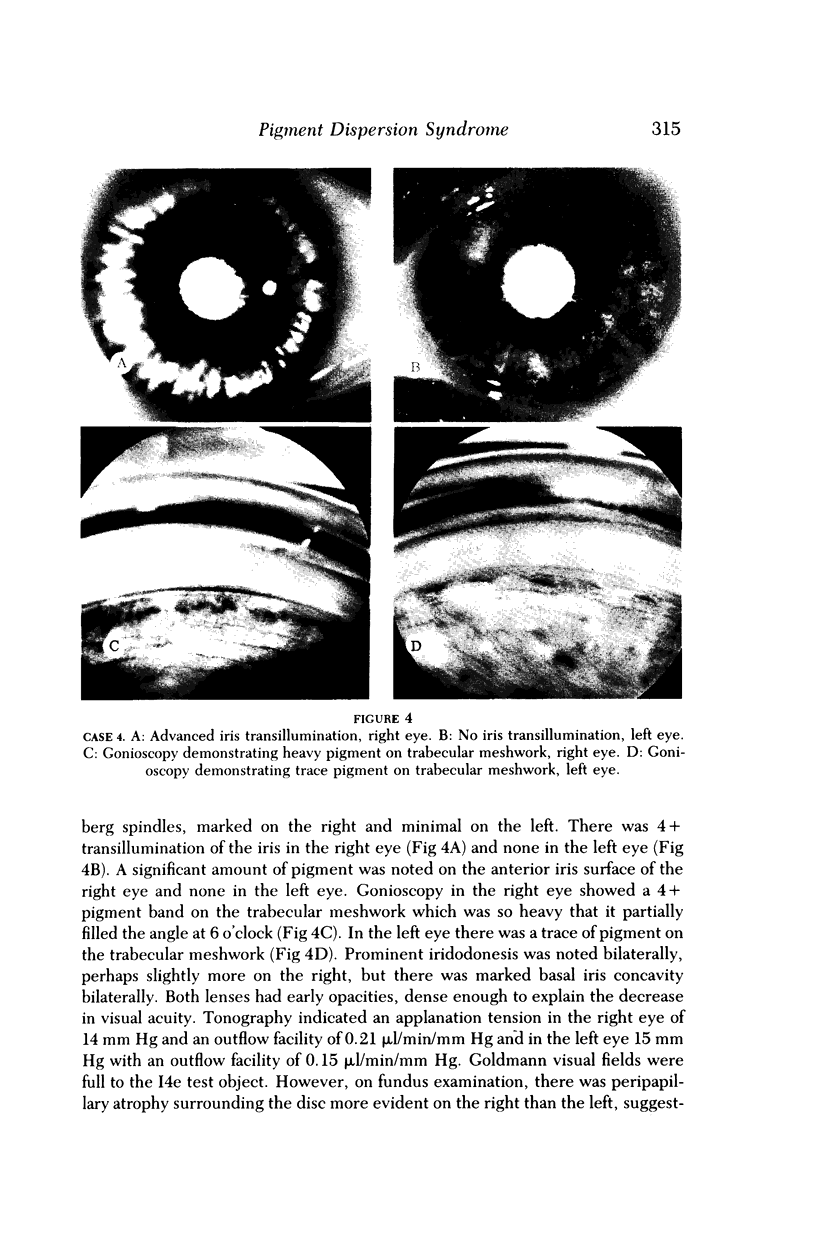
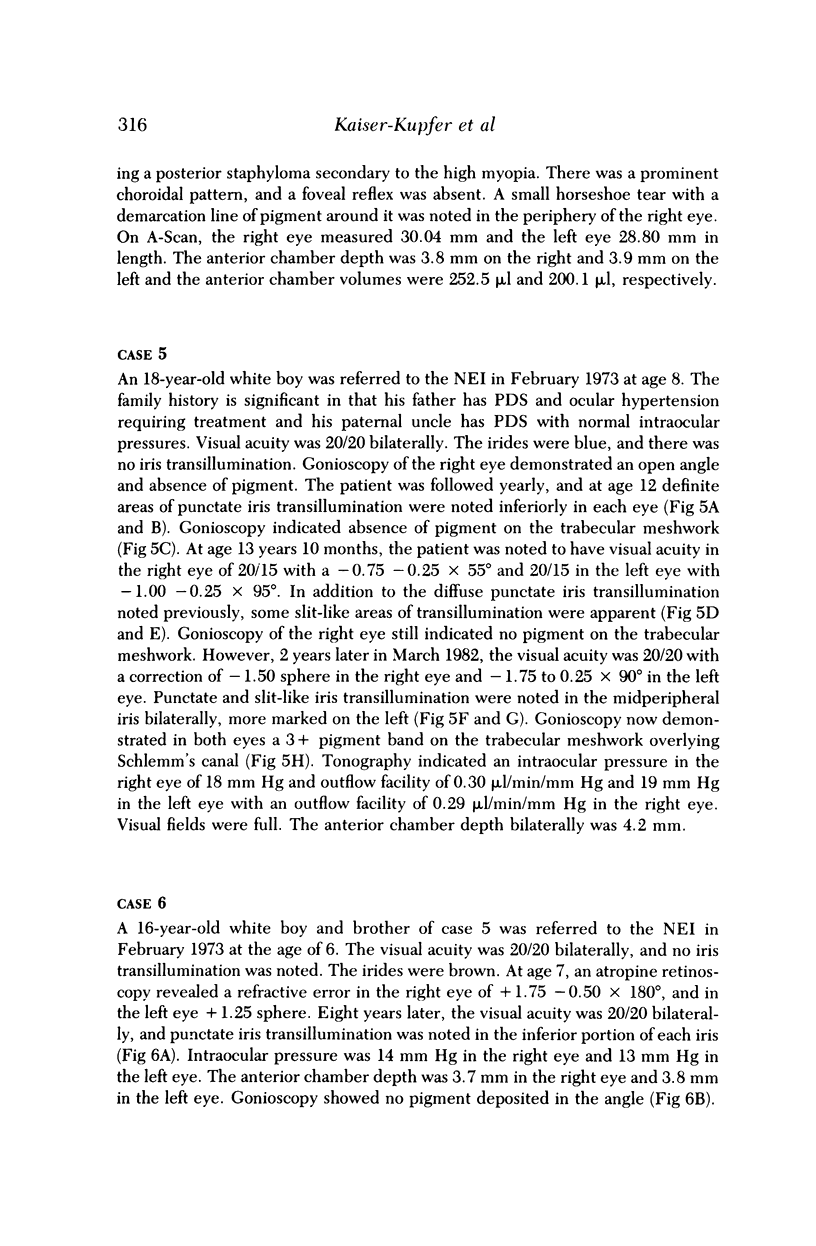
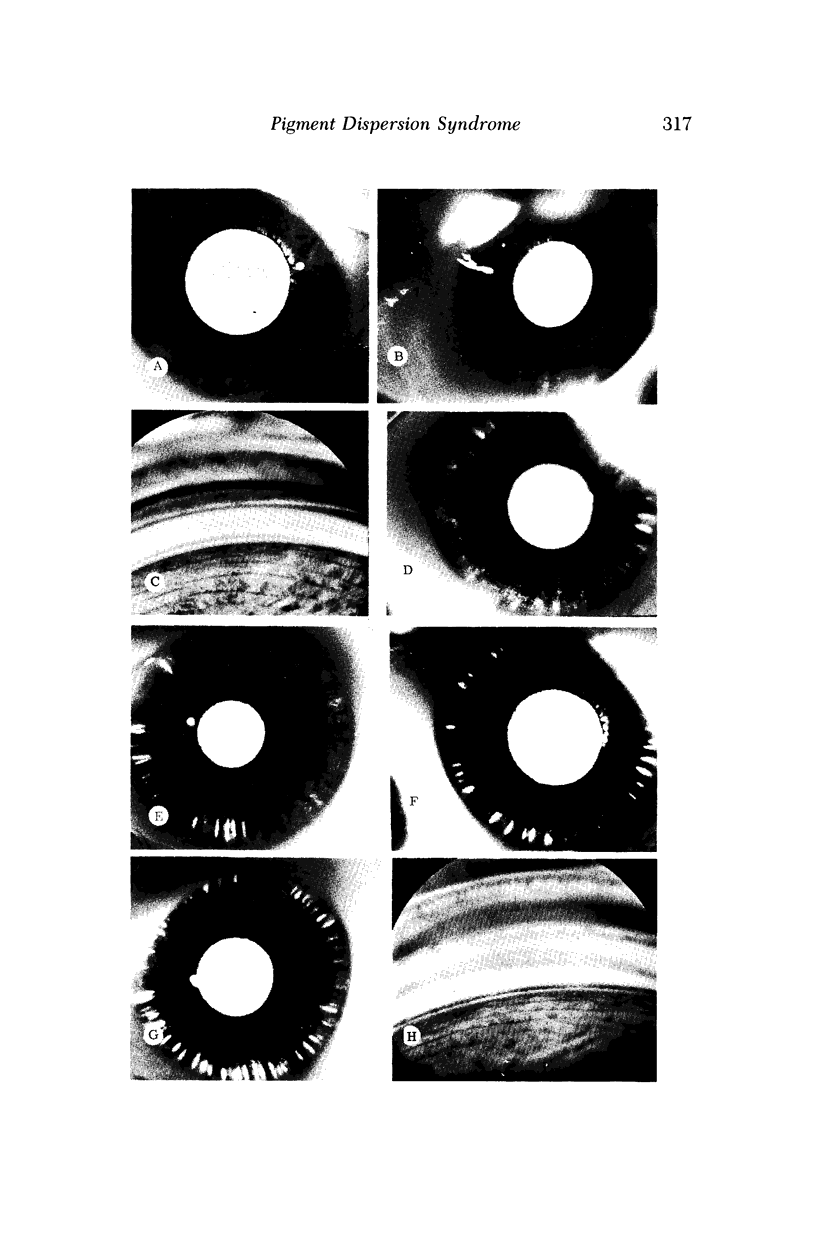
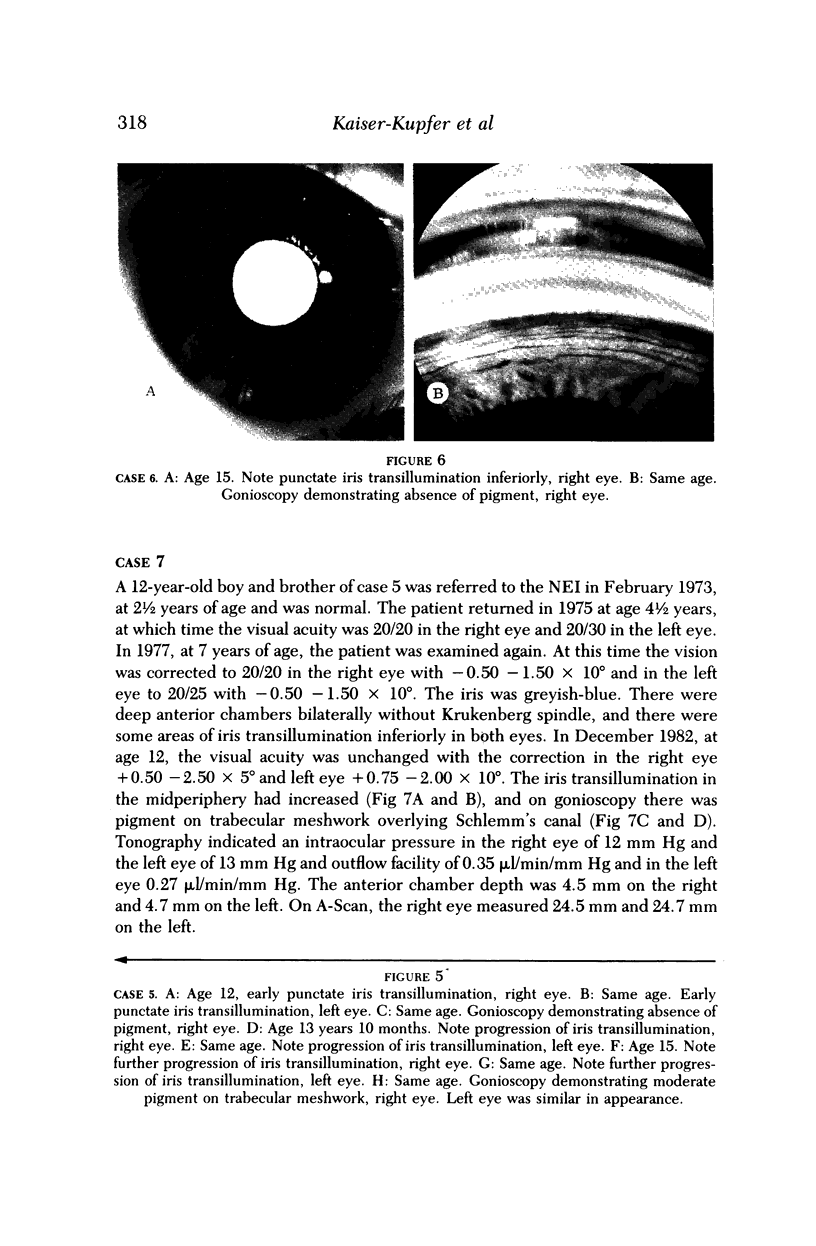
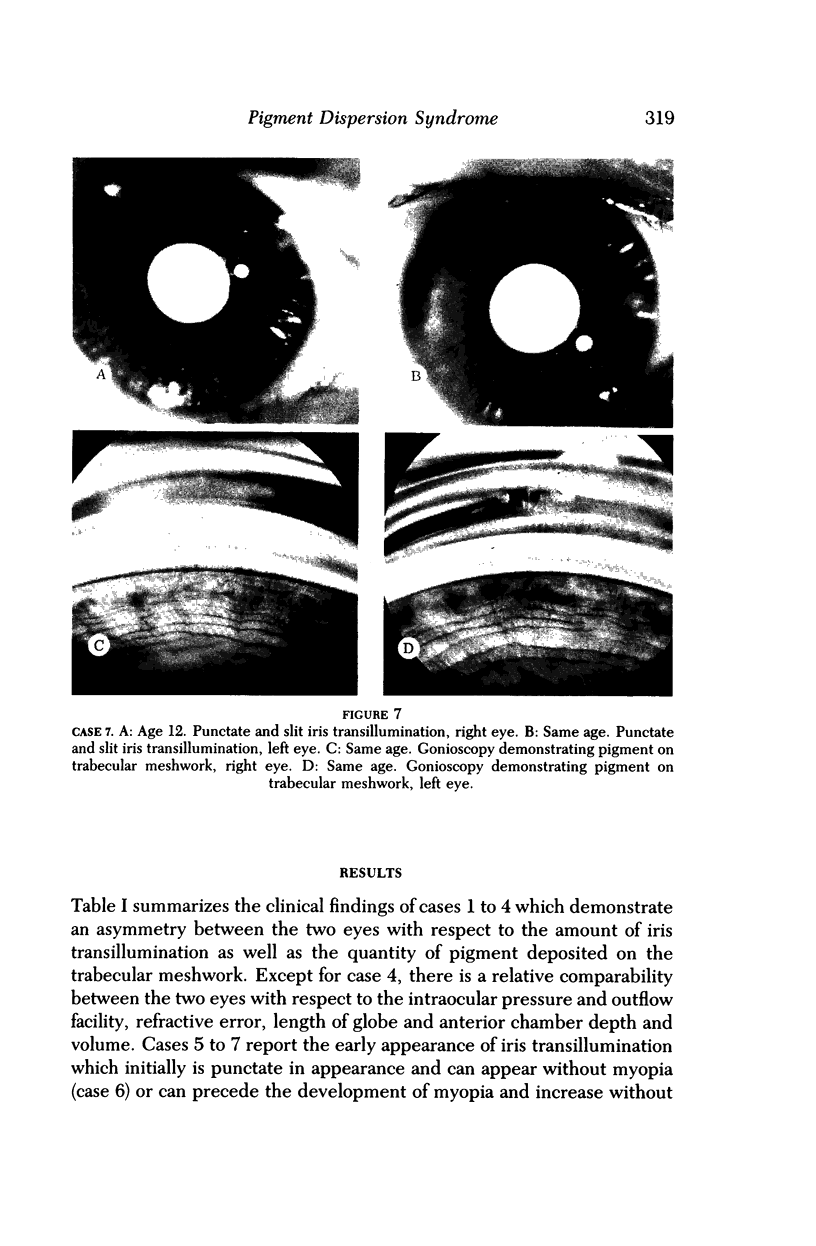
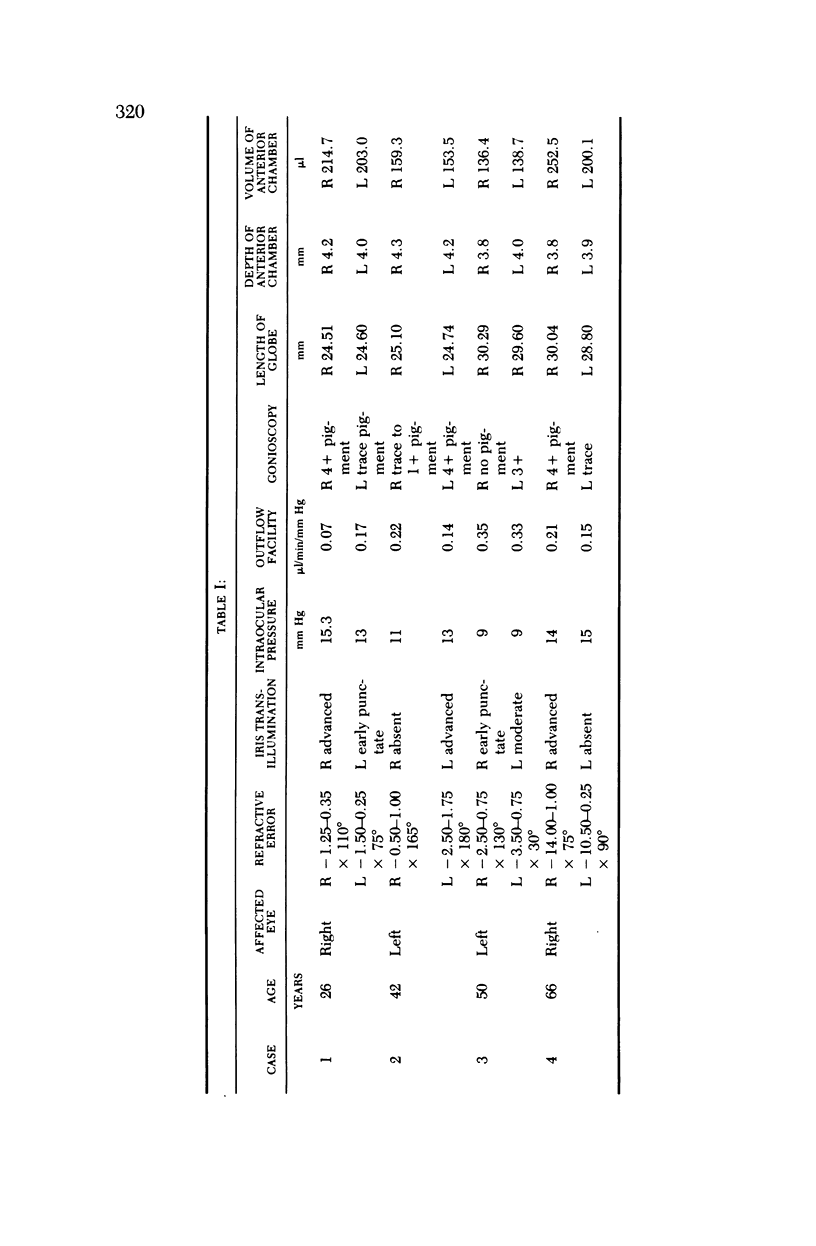
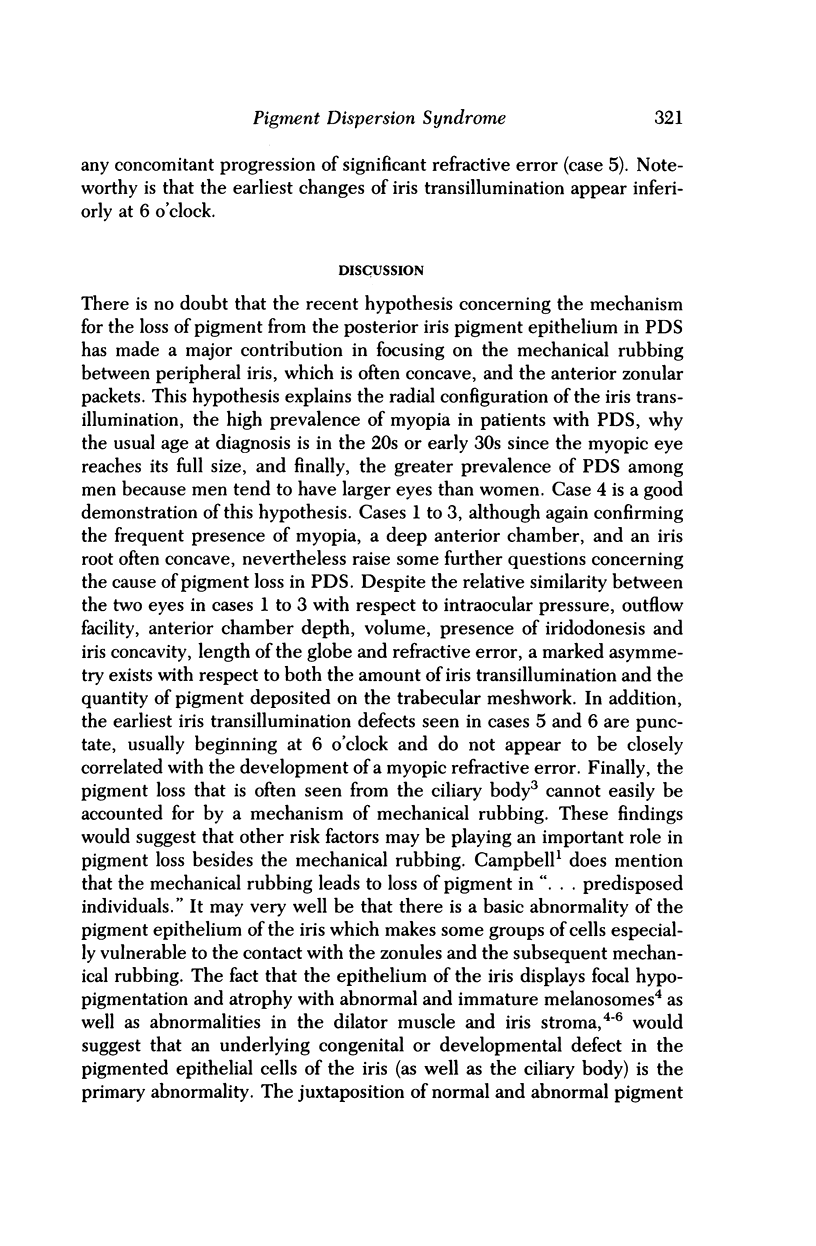
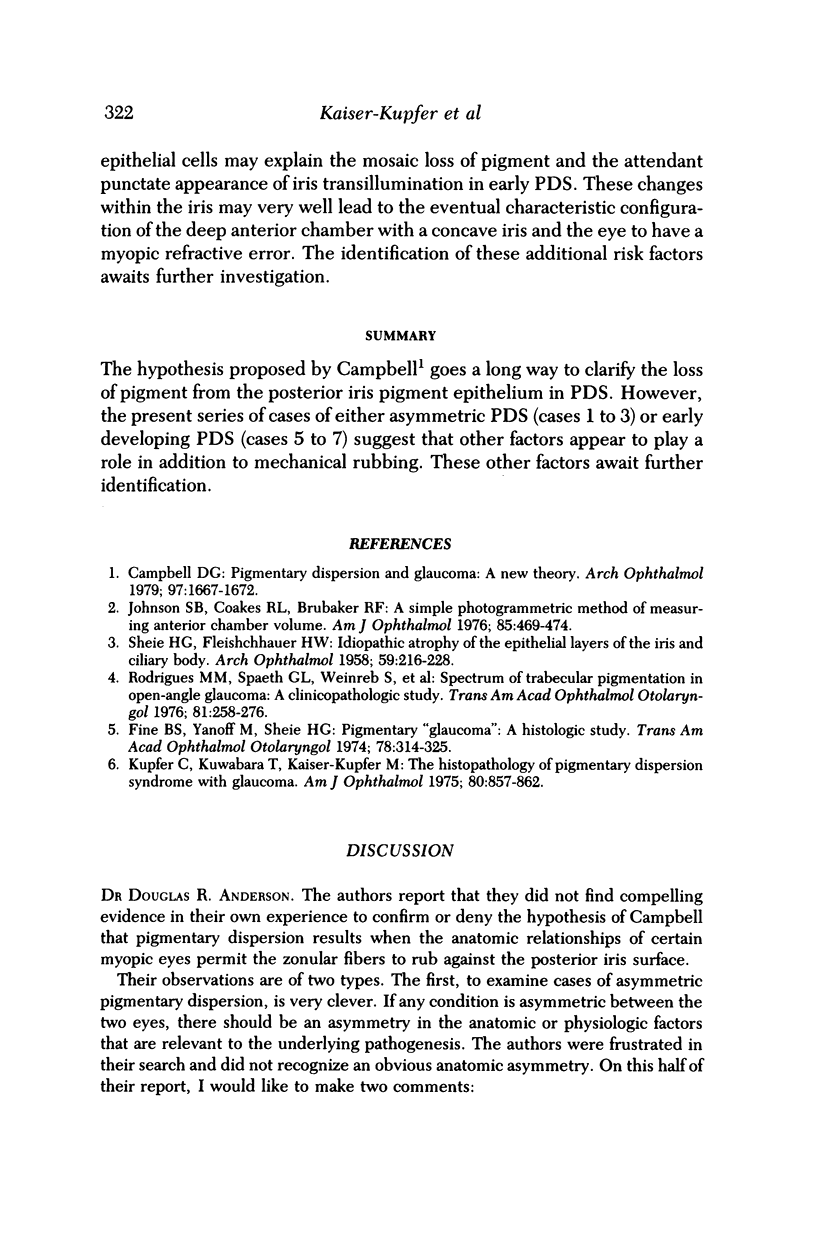
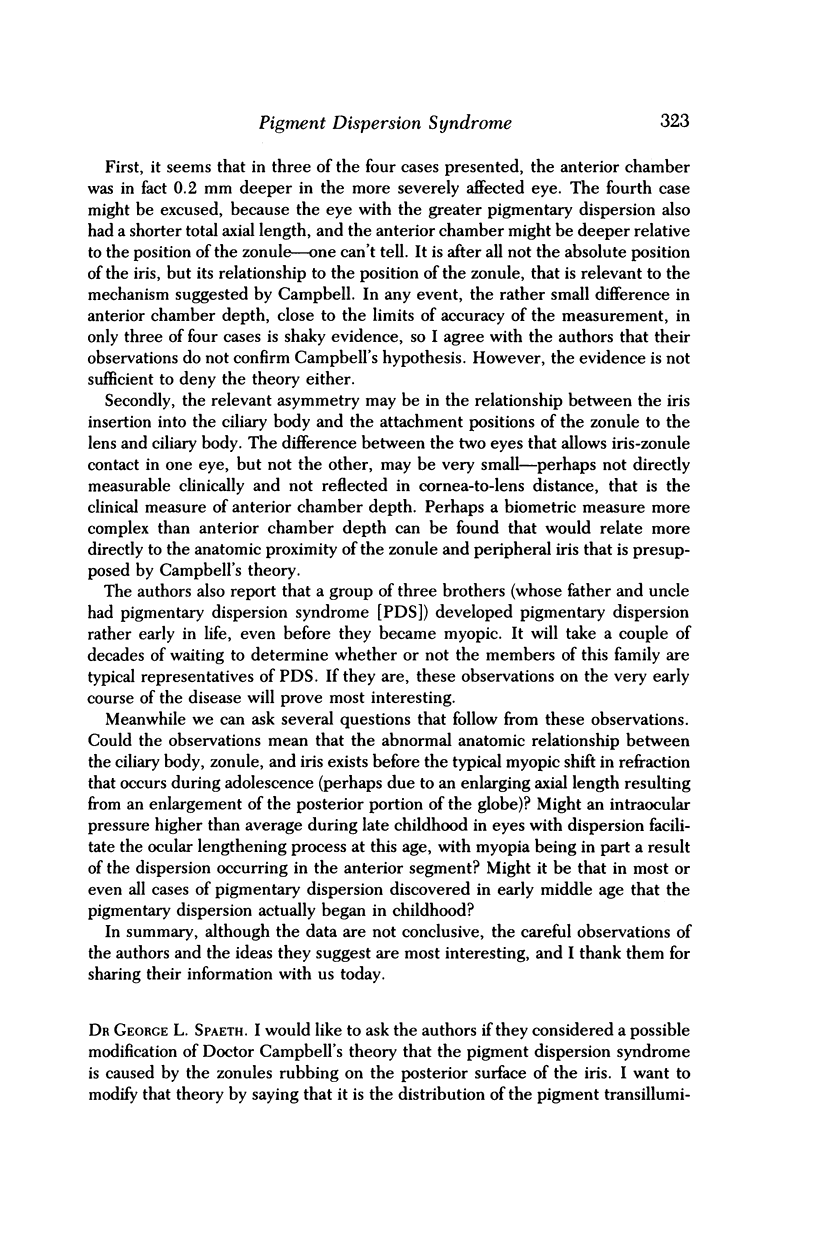
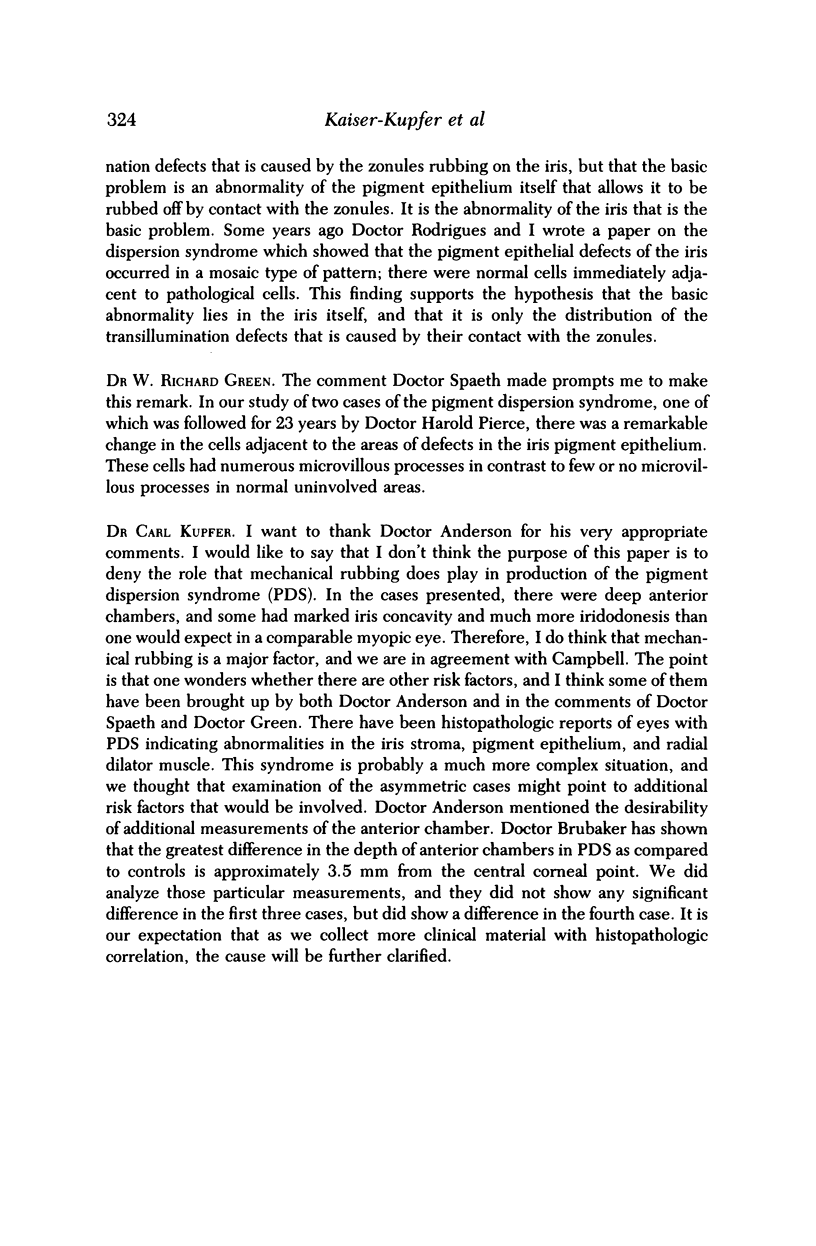
Images in this article
Selected References
These references are in PubMed. This may not be the complete list of references from this article.
- Campbell D. G. Pigmentary dispersion and glaucoma. A new theory. Arch Ophthalmol. 1979 Sep;97(9):1667–1672. doi: 10.1001/archopht.1979.01020020235011. [DOI] [PubMed] [Google Scholar]
- Johnson S. B., Coakes R. L., Brubaker R. F. A simple photogrammetric method of measuring anterior chamber volume. Am J Ophthalmol. 1978 Apr;85(4):469–474. doi: 10.1016/s0002-9394(14)75243-2. [DOI] [PubMed] [Google Scholar]
- Kupfer C., Kuwabara T., Kaiser-Kupfer M. The histopathology of pigmentary dispersion syndrome with glaucoma. Am J Ophthalmol. 1975 Nov;80(5):857–862. doi: 10.1016/0002-9394(75)90283-4. [DOI] [PubMed] [Google Scholar]
- Rodrigues M. M., Spaeth G. L., Weinreb S., Sivalingam E. Spectrum of trabecular pigmentation in open-angle glaucoma: a clinicopathologic study. Trans Sect Ophthalmol Am Acad Ophthalmol Otolaryngol. 1976 Mar-Apr;81(2):258–276. [PubMed] [Google Scholar]
- SCHEIE H. G., FLEISCHHAUER H. W. Idiopathic atrophy of the epithelial layers of the iris and ciliary body; a clinical study. AMA Arch Ophthalmol. 1958 Feb;59(2):216–228. doi: 10.1001/archopht.1958.00940030084007. [DOI] [PubMed] [Google Scholar]






